Projects
Implementation and Monitoring of Projects Aimed at Reducing GHG Emissions
Calculating a Project Cost-effectiveness
The distinctive feature of an energy efficiency project is its high financial payback. Very often, energy efficiency projects will reduce equipment maintenance costs, but generally they are difficult to quantify and of little interest to the decision makers. What matters more to them is its ‘direct’ financial return.
In simple terms, the question is: I have $1,000 in the bank. It earns me 7% interest. If I lend you this money, what interest rate will you give me?
If you promise 8%, this in theory should be a better investment than at the bank, but in practice this is not the case. The rate of interest must also factor in a calculation of risk. According to accountants, carrying out a project is riskier than leaving money ‘securely’ in a bank.
Thus, when making capital investments, some businesses will require 2% to 3% more than the rate paid by a bank (or through other investments).
This is where energy efficiency projects become very interesting. Since energy savings (and therefore lowered fuel consumption) can be easily calculated, the risk is low. In addition, given that fuel prices have currently (2016) fallen to historical lows, the chances that the price of oil will rise is certainly higher than the opposite happening, which reduces risk even more significantly.
We have assessed, developed and implemented over a hundred projects on some twenty ships. Some of the projects received subsidies while others did not given their exceptional returns without the need for financial aid.
Projects Examples (All Real-Life Examples Implemented on Merchant Ships)
EXAMPLE 1:
The electrical energy consumption on this ship was as follows:
- Domestic hot water heaters: 13 kW on average, 250 days per year
- Accommodations heating: 60 kW on average, 90 days per year
- Stand-by generator heating: 15 kW on average, 250 days per year
Since there were no auxiliary steam boilers on this ship, it was imperative to install a waste heat recovery system on the jacket water of the diesel engines. The main engine produced more than 1,800 kW of heat while at sea and the auxiliaries generated more than 150 kW.
The generators produced electricity at a cost of $0.17/kWh. (227 g/kWh and $750/t)
The annual energy consumption for these three machines amounted to 297,600 kWh or $53,592 per year. The totality of this energy can be provided by the diesel engines waste heat.
The project cost $165,000 and the return required by the shipowner was 8%.
The project actually yielded 18.7% over 5 years… a hard-to-beat result!
Reduction of 228 tons of CO2 equivalent (potential PETMAF subsidy: $228,000)
EXAMPLE 2:
This ship had a main sea water cooling pump that consumed 35 kW, 24/24, 300 days per year.
We replaced the pump by a model that was 10% more efficient and installed a variable speed drive that was controlled according to seawater temperature and the thermal load.
Consumption before the changes = 252,000 kWh
The generators produced electricity at a cost of $0.08/kWh. (220g/kWh and $350/t).
Annual fuel cost = $20,160
Project cost = $52,500
The return required by the shipowner was 8%.
After the changes, energy consumption dropped to 100,000 kWh.
A savings of $12,160$ per year.
This project yielded a 10.3% return over 5 years.
Reduction of 107 tons of CO2 equivalent (potential PETMAF subsidy: $107,000).
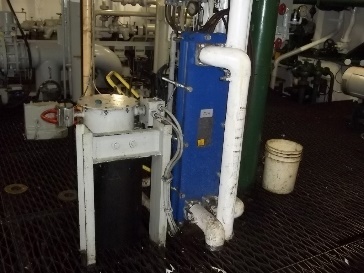
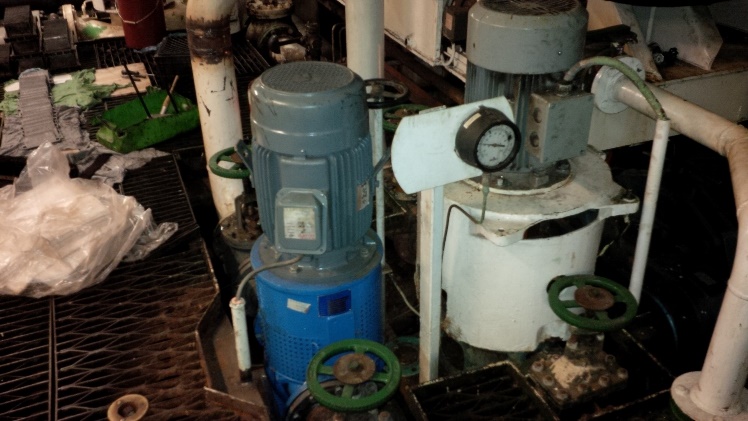


EXAMPLE 3:
On this ship, the compressed air consumption stood at 1,000 m3/day, 350 days per year. All of the air was produced by a main air compressor set at 22 bars (5.5 m3/kWh).
Since 95% of the air was consumed at 6 bars, it was decided that an auxiliary service air compressor would be installed, that would also feed the main engine controls (Class approved).
The project cost was $17,000 and the return requited by the shipowner was 8%.
The cost of energy was $0.18/kWh.
The new compressor produced air at 12.5 m3/kWh for a savings of 35,600 kWh or $6,400 peryear.
This project yielded a 28.8% return over a 5-year period.
Reduction in GHG emissions of 25.0 tons (potential PETMAF subsidy of $25,000)
EXAMPLE 4:
On this ship, the fans in the machine room functioned in manual mode: fast, slow or turned off. Because outdoor temperatures and diesel engine loads fluctuated constantly, it was decided to automate the fan speeds so that they functioned in sync with the engine room temperature and the diesel engines needs.
This involved installing an automatic control system (PLC) with touch screen interface, two variable speed drives and an automatic start/stop controller.
The energy savings averaged 25 kW over a period of 180 days, for a total of 108,000 kWh at $0.15/kWh.
The project cost $60,000 and enabled the shipowner to save $16,200 per year. The return on investment was 11%. Thanks to a PETMAF subsidy, the actual ROI exceeded 46% over 5 years.
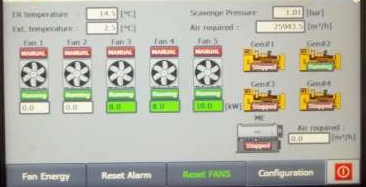
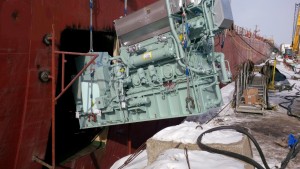
EXAMPLE 5:
A vessel consume over 2,200,000 kWh a year. The old generators consume in average 275g/kWh. A new diesel generator can be installed with a SFC (specific fuel consumption) of 220g/kWh.
Since the new generator can produce at least 80% of this load; 1,760,000 kWh the fuel economy on MDO is 97 tons of fuel a year. 72,600$ fuel saving a year (at 750$/t).
PETMAF can give 310,000$ (310 tons of CO2eq reduction). Project cost is 750,000$. The MTQ subsidies will reduce the installation cost to 440,000$.
This project has a IRR of 10,3% over a 10 years period.
About the Subsidies
The PETMAF Program subsidizes up to 50% of project costs and up to a maximum of $1,000 per ton of reduced annual GHG emissions. Usually, over the course of our energy audits, we identify several projects that are eligible for a subsidy. The shipowner is able to choose the projects he wants to carry out from a list that we provide.
In several of the cases mentioned above, the reduction of GHG was greater than 50% of the project costs. Consequently, the maximum subsidy amount (up to 50% of the project cost) is available for projects provided they meet the Program’s objectives.
The yields will therefore often be higher than 25% over 5 years. No other investment can guarantee that kind of performance!
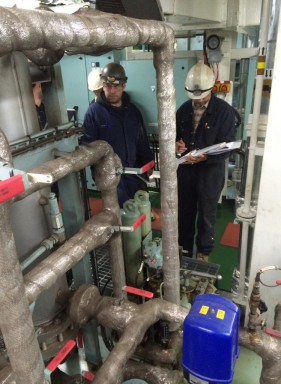
The energy audit allows you to find cost-effective projects. Once the applications for financial assistance are accepted, if need be, GHGES can oversee the work to ensure that it meets the proper installation criteria. The implementation of the project boils down to the following:
- Plans and specifications;
- Budget estimate;
- Schedule on MS Project;
- Installation;
- Commissioning and testing;
- Preparation of the operating manual (here’s an example);
- Installation of data loggers;
- Follow-up for one full year.
Why wait? Contact GHGES Marine Solutions now.
Operation manual example
Association of Energy Engineers
Certified Energy Manager (CEM)
Certified CMVP
Membre / Member AEE

